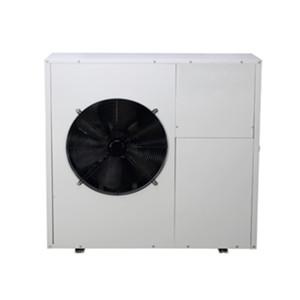Do Heat Pumps Work with Underfloor Heating?
Today, there is no doubt that the heat pump is one of the most advanced
three-purpose heating and cooling equipment on the market. With their unique
ability to meet the cooling, heating and hot water needs of your home or
commercial property, these devices become supreme as they suck in outside air
for these purposes. This means that your device can use the least amount of
electricity to power most of the main functions of your home.
Benefits of the combination of floor heating system and heat pump:
Hydraulic heating or floor heating is a very cost-effective and
low-energy heating solution for residential and commercial properties.
These systems are suitable for a range of installation options and have
a place in the market due to their many advantages. Among them, users can
freely design space, powerful heating capacity and no negative impact on
health, increasing its cost-effectiveness and energy efficiency capabilities.
By combining heat pump technology with floor heating technology, you can
combine the unparalleled advantages of these two systems. Here, cyclic heating
can use the former to take advantage of convection, encouraging heat to rise
through the space instead of forcing it to fall. This also allows zone
control-without heating the entire floor of the office or home, specific rooms
and spaces can be heated as needed.
Given that the heat pump can seamlessly switch from heating or cooling,
and its easy integration with photovoltaics and battery packs, this makes it
easier to purchase energy off-grid.

Why can underfloor heating work with an air source heat pump?
The floor heating system has a larger heat radiator area, so compared
with a traditional radiator, it may occupy one or two square meters on your
wall. The floor heating has a very large heat exchange surface.
Let's take a closer look at how the radiator works...
The thermal emitter is about the temperature difference between the
emitter itself and the desired room temperature. So if your radiator runs at 60
degrees and you want to keep the room at 20 degrees, then a small radiator can
do the job, albeit inefficiently. In this case, the system will work very hard
to keep the temperature so high.
If you install a larger radiator (floor heating or oversized radiator),
the system can operate at temperatures as low as 30 degrees, and you will still
get the required 20 degrees in the room. Since the system works at a lower
temperature, it is inherently more efficient.
How much does it cost to install a heat pump and floor heating system?
The purchase cost of heat pumps can be high, but their enhanced
energy-saving performance means that the cost savings they provide can exceed
the initial cost-typically hundreds of pounds of energy savings per year.
Depending on your energy needs and property specifications, the price of the
heat pump may vary. The cost of an air source heat pump is about 4,000 to 8,000
pounds, while the cost of a ground source heat pump will be even higher, about
12,000 to 18,000 pounds.
The cost of floor heating also depends on the size and sCOPe of your
project, but you can pay approximately £41.57 per square meter + VAT for the additional
installation of our heat pump system. The installation costs of heat pumps and UFH
systems will also vary. Using our innovative floor heating online quotation
tool will help you get the precise price of the selected system.
It is important to know that by installing a heat pump, you may be
entitled to a government grant through a domestic renewable thermal incentive
program designed to promote the use of renewable energy.
Use our free quote service
If you need to buy an air source heat pump to install on your floor
heating system. You can contact us. We will give you a free quotation service.





